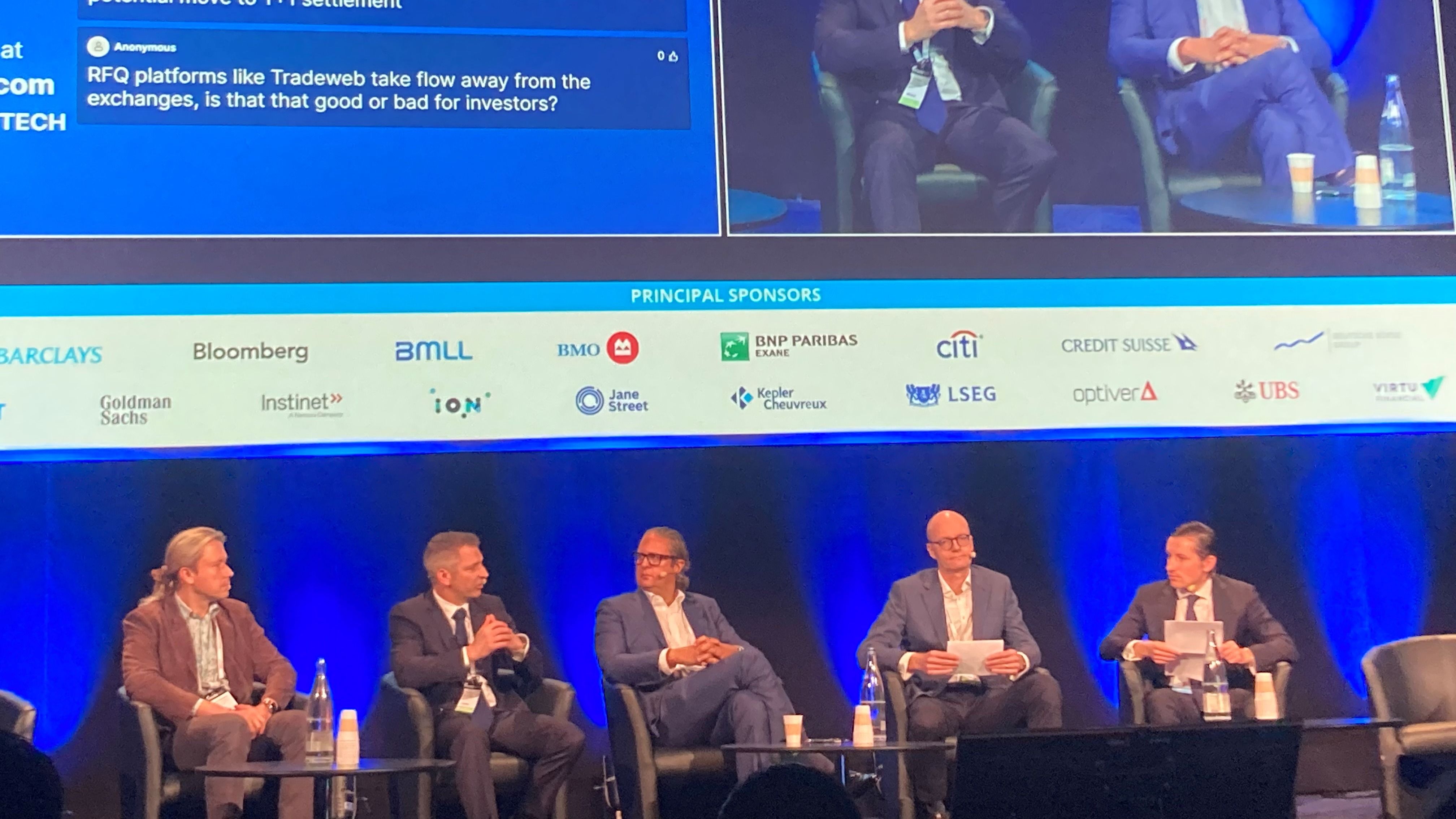The rise of algorithms when trading ETFs is helping with the lack of liquidity on-exchange, industry experts have said.
Speaking at the TradeTech conference in Paris last week, Tim Miller, senior trader at Fidelity International, said ETF trading has developed to use electronic practices such as algorithms to create more efficient and bespoke trading solutions.
Traditionally used when trading equities, the growth of algorithms using a fair value model when trading ETFs is helping when there is less volume across exchanges.
Request-for-quote (RFQ) platforms currently dominate ETF trading in Europe, an unintended consequence of the introduction of MiFID II in 2018 which attempted to push more flow onto ‘lit’ venues.
RFQ platforms have grown in popularity by enabling buyside traders to interact with multiple liquidity providers to ensure immediacy of execution and competitive pricing.
According to data from Jane Street, RFQ’s ETP trading market share jumped to 50% in 2022, up from 48% in 2021 and 44% in 2020.
“The on-screen liquidity for ETFs is by and large pretty rare so trying to use an algo when there was no volume became pretty frustrating,” Miller explained.
“Solutions are now coming to the market where the algos have an embedded fair value model that can work out the ETF basket for an approximate fair value which can then be traded.”
Miller added ETFs are trading more like equities as a result, enabling traders to split up the orders over the desired time period.
“ETFs have traditionally been the opposite, where people just want it done straight away,” he said. “Now, there are more algo providers coming to the fore with genuine ETF algo solutions so we are experimenting with those.”
Sander van Nugteren, managing director for iShares global markets EMEA and APAC at BlackRock, added the emergence of algo trading is one of the key trends in the ETF space.
“They have always been used in equities and are now being used increasingly in the ETF space,” he said.
Despite the apparent benefits, van Nugteren said there are still certain challenges trading at fair value can bring.
“There is a level of complexity around these algorithms when it comes to things like fair value which you do not have on the equity side,” he said.
“You also have to consider your portfolio manager’s trading strategies and how you consider an equity trade. Do you want immediate execution or can you sit on the trade for days? It is not one size fits all. There are multiple different technologies in the market.”





